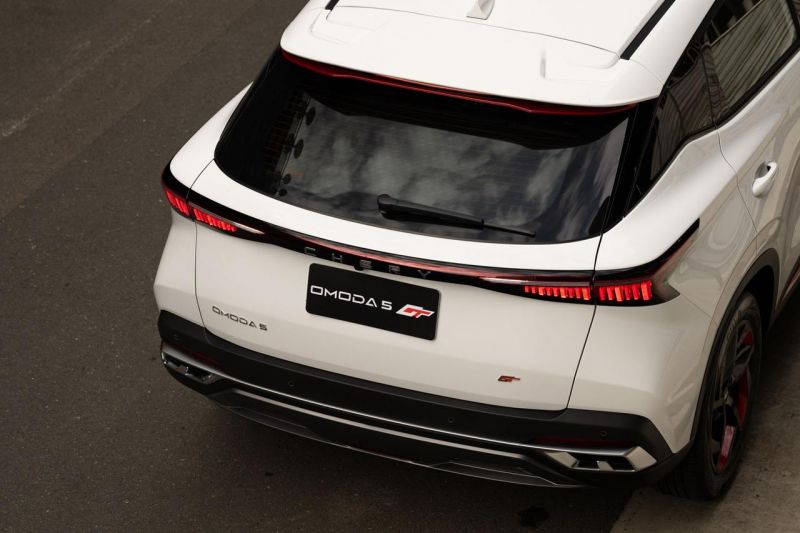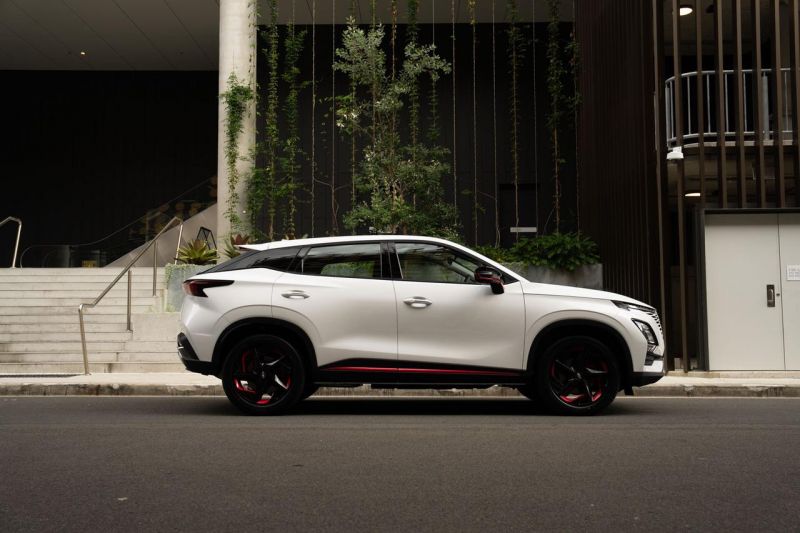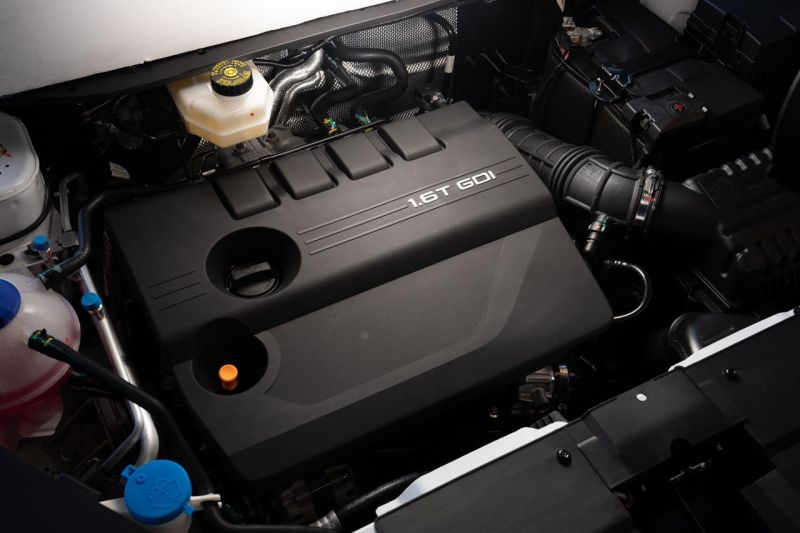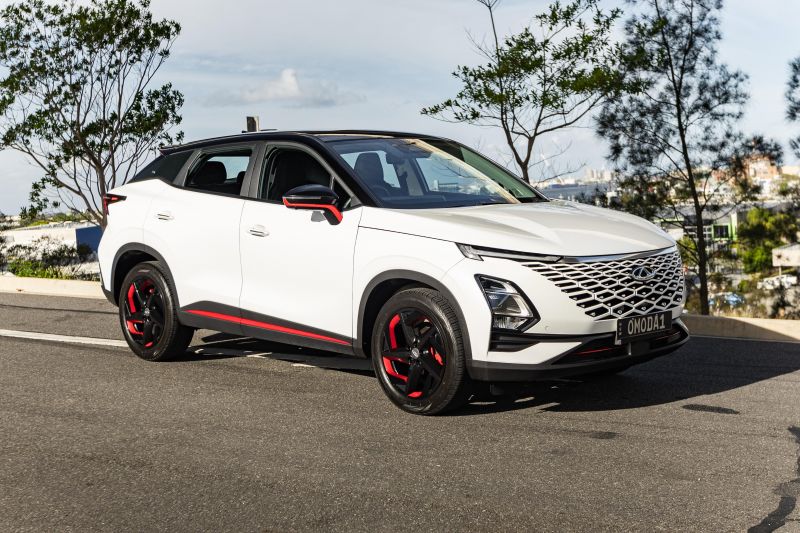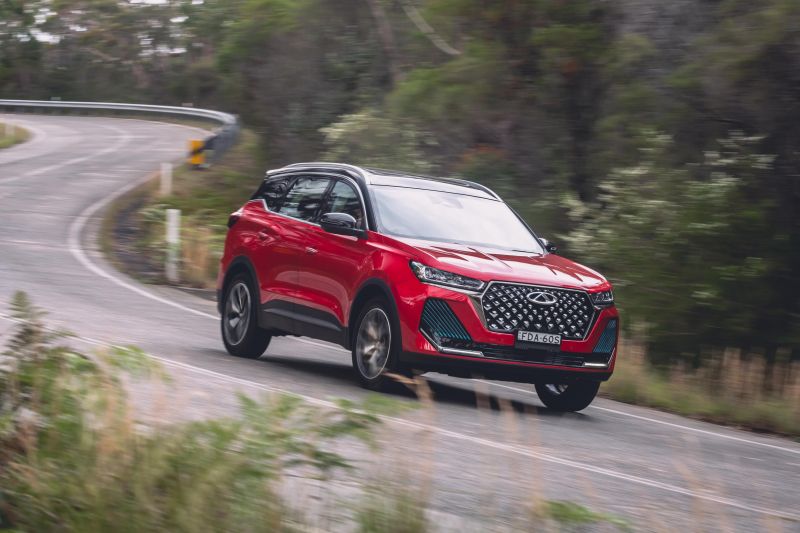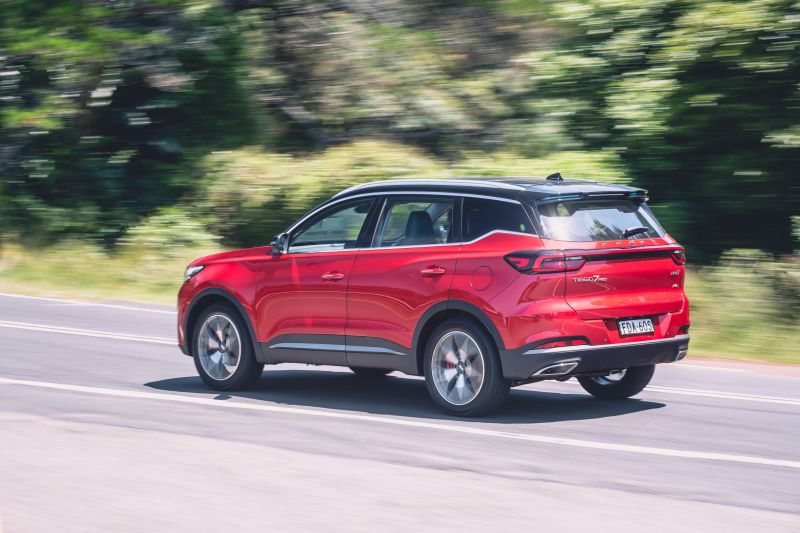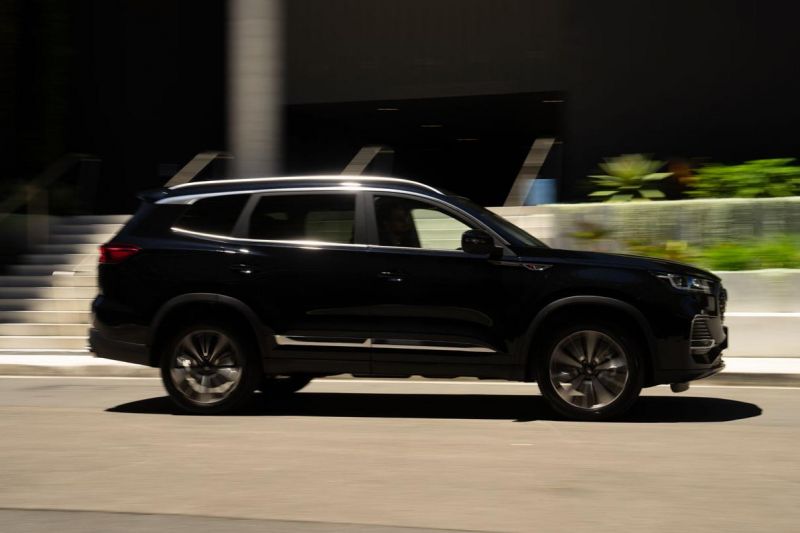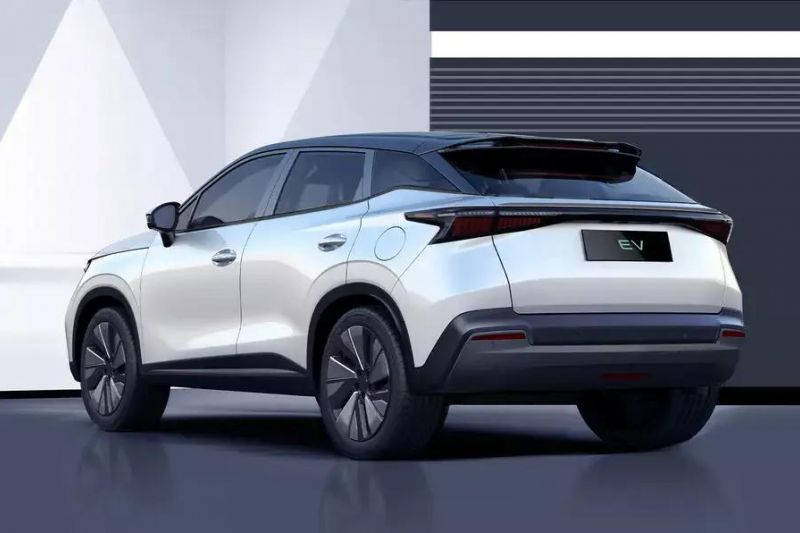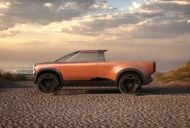Chinese brand Chery is on a roll.
Despite only relaunching in Australia in April 2023, in the final month of the year its Omoda 5 small SUV had a 5.1 per cent share of its segment, outgunning the likes of Nissan Qashqai, Skoda Kamiq, Renault Arkana, Honda HR-V, and not far off the Mitsubishi Eclipse Cross.
It has also just revealed a couple of new Omoda 5 GT variants, available with either front- or all-wheel drive, a more powerful turbocharged 1.6-litre engine, a seven-speed dual-clutch transmission and independent rear suspension.
There’s also a battery-electric version of the Omoda 5 arriving mid-year called the E5.
Before that arrives, the three-row Tiggo 8 Pro Max will come in April to rival models like the Honda CR-V and Mitsubishi Outlander.
It’ll slot in above the Tiggo 7 Pro, a slightly smaller model that competes in the extremely popular mid-sized SUV segment.
It only arrived in November, and yet the following month it had a 1.2 per cent share of its segment – not huge, but better than more established models like the Renault Koleos and Skoda Karoq.
The relaunched brand isn’t done yet, with an array of new products in the pipeline.
We recently sat down with Chery Australia managing director Lucas Harris for a deeper dive into the road ahead for the brand.
CarExpert: With the new Omoda 5 GT variants in both AWD and FWD iterations arriving in showrooms now, how do you expect the addition of these two new variants will impact Chery’s sales overall?
Lucas Harris: I think we’ll see some incremental growth for sure offering a more powerful 1.6-litre turbo engine, which is going to attract some new customers who weren’t looking at the Omoda 5 in the 1.5-litre configuration.
Also, I think we’ll see some customers with a strong desire to have the top model with the top spec, so we may see some would-be 1.5 EX customers may step-up into the GT model, but we suspect we’re going to see some incremental sales, particularly with the AWD option.
CE: What do you think the take up will be of these new additions to the Omoda 5 range as a percentage of the overall Omoda 5 model sales?
LH: It’s obviously early days and I’m speculating as you will appreciate, but based on some of the information we have at hand, we’d expect to see around a third of our Omoda 5 sales to be in that GT line.
Customers seem to have a tendency to go for those top models as they do see the value in spending a little bit more. It’s only 100cc in engine size but it’s a phenomenal difference in power and torque, so it’s really big change in the overall drivability of the vehicle.
In terms of total volume, we think the model deserves to be selling a lot more than we’re doing now, and as we grow our network and our brand awareness, we’d like to see the Omoda 5 line exceed 1000 units per month.
Dealers have already started to receive demonstrator vehicles of the two-wheel drive versions, and over the next four to six weeks we’ll see more of the stock arrive, while AWD GTs should land on showroom floors towards the end of March this year.
Q: Given there’s only $2000 difference between the GT 2WD and GT AWD versions, what do you think the take-up of all-wheel drive versions will be?
LH: If Tiggo 7 is anything to go by the all-wheel drive has been quite a big drawcard for people, so there does seem to be a preference for that version.
I’d hate to put a figure on it, but I’d be very surprised if it wasn’t an even split between 2WD and AWD GTs.
CE: For the new Omoda 5 GT variants what is the main competition and where are the buyers coming from?
LH: Most of the customers who are purchasing Omoda 5 are considering Kia and Hyundai models, but also GWM models, so they’re the main competitors that we’re being considered against.
But it’s very interesting looking at the previous cars that customers owned who are buying Chery vehicles. There’s a surprising amount coming out of Holden as their previous car before buying a Chery Omoda 5, as well as plenty that are hopping out of a Kia.
CE: While Kia still makes cars for the more affordable end of the market, it also has a rival model in the small SUV segment that’s nudging $45,000 or more plus on-roads – so do you think buyers are looking for more bang for buck with the latest Chery offerings?
LH: What we’ve tried to put together with Omoda 5 is a very compelling value offering.
It’s a lot of spec for a very competitive price and I think customers are seeing that, particularly in the package of Omoda 5 where it’s a very attractive design. That alone is getting a lot of interest as well.
So, it’s a great design, very well specced and very competitively priced and customers are recognising that its very good value for money.
CE: I know that Chery has recalibrated its ADAS systems for the local market here in Australia, but what about local dynamic tuning from steering, gearbox, throttle and suspension specifically for this market – is that something Chery is interested in doing?
LH: We’re in a very fortunate position where our colleagues in the R&D centre have got a very strong level of interest in supporting us locally in Australia and that means designing and developing cars that will be good for our market. And that’s a great first step.
We’ve started local tuning for systems like ADAS and we’re currently working on plans to expand that to other elements of the vehicles through all of the above in terms of the dynamic feel through steering and suspension but also the assessment of engine and transmission performance and how well they’re adapted to driving conditions here.
We’re currently in discussions with local experts and potential partners to help us with that, so watch this space.
Unfortunately, at the rate we’re launching new models, the first iterations aren’t going to have the more involved dynamic tuning completed but certainly things like ADAS has been a big focus for us.
But as we evolve in Australia and as existing models are refreshed, that’s when it’s absolutely our intention to leverage the willingness from our colleagues in R&D to support us with as much of that local tuning and adaptation as we can.
CE: Can you suggest the first model that might get a full local dynamic tune when it comes to best possible comfort on local roads full of cracks, bumps and potholes?
LH: It’s probably too soon to share this with you as to which models will benefit from the first round of dynamic tuning.
CE: You mentioned GWM Haval among other Chery competitors, so how do you see Chery positioning itself against other Chinese owned brands which might also include MG, at least with its ICE product, but how does Chery stack up against those brands?
LH: I think we’re on record of saying it before but Chery is the most premium of the Chinese brands, particularly those in market currently.
We’re not a cut-price brand, we’re a high value, very high-quality offering with ample specs and features to go along with that.
Where we’re positioned is the most premium and the best value for money Chinese brand.
CE: What about all-electric product, I know you have the E5 (Omoda 5 EV) coming mid-year in 2024, but it that going be the start of a cadence of EV models for Australia?
LH: The short answer is yes, we have got other BEV offerings other than the E5, so that will be the first, but Chery has a large portfolio of ‘new energy’ vehicles – whether it’s range extended BEV, PHEV and normal hybrid vehicles.
I think you’ll see from us over the next two years all sorts of different powertrains from ICE right through to full-blown range-extended EV – and that’s really about us not trying to alienate any one customer’s needs.
We don’t want to dictate to customers what they should or shouldn’t want in terms of the powertrain, so it’s really about making sure that we offer a product that’s fit for purpose and suits a wide range of customer’s needs.
CE: When is the E5 landing in showrooms?
LH: We’re trying really hard for the mid-year – that’s our goal for the moment.






